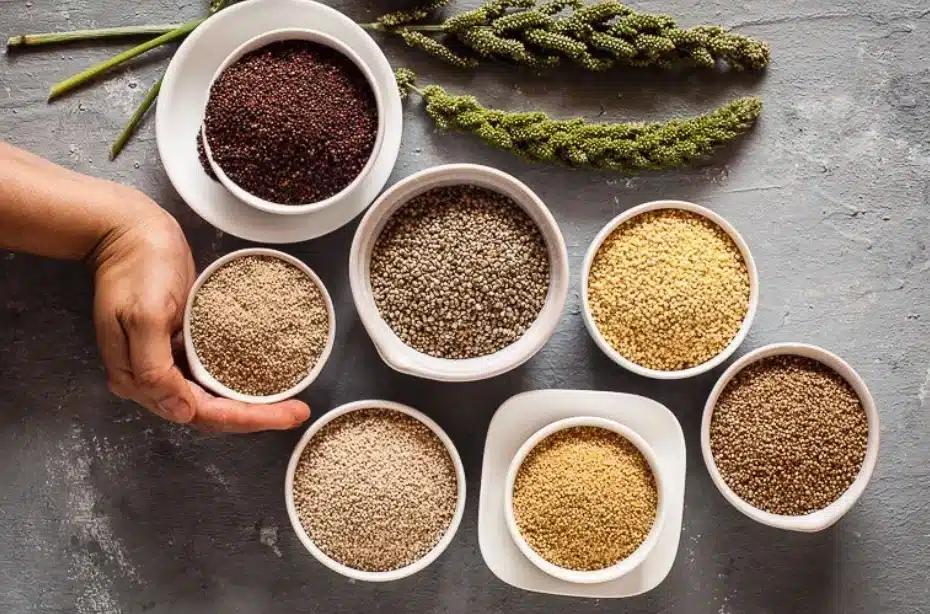Introduction
As urbanization continues to shape our lifestyles, there’s a growing need to strike a balance between modern convenience and traditional wisdom, especially when it comes to our diets. Millets, the ancient grains of India, offer a perfect solution to this dilemma. These nutrient-rich powerhouses not only align with the principles of sustainable and healthy eating but also hold the key to preserving our cultural heritage. In this blog, we explore the significance of incorporating millets into modern urban kitchens and how they can enrich our diets and overall well-being.
Rediscovering Indian Traditional Grains
Millets, including varieties like finger millet (ragi), pearl millet (bajra), and foxtail millet, have been a staple in Indian diets for centuries. However, with the advent of commercial agriculture and modern food processing, millets lost their prominence to more popular grains like rice and wheat. In recent times, there’s been a resurgence of interest in millets due to their numerous health benefits and eco-friendly cultivation practices.
Incorporating Millets into Modern Diets
Bringing millets back into urban kitchens involves creativity and innovation. Here are some strategies to seamlessly incorporate these traditional grains into modern diets:
- Substitute for Rice and Wheat: Replace a portion of rice or wheat with cooked millets in dishes like pulao, biryani, and upma. This simple swap adds nutritional diversity to your meals.
- Breakfast Boost: Start your day with millet-based breakfast options like ragi dosa, bajra khichdi, or millet porridge. These options provide sustained energy throughout the morning.
- Snack Smartly: Snack on millet-based items like baked millet chips, millet granola bars, or finger millet cookies for a healthy and crunchy treat.
- Millet Flour Magic: Experiment with millet flours to make rotis, dosas, pancakes, and even baked goods like muffins and bread. These gluten-free alternatives cater to various dietary preferences.
The Nutritional Diversity of Millets
Millets are a treasure trove of nutrients that can invigorate modern urban diets. Beyond the well-known health benefits, these grains offer a unique nutritional profile that complements modern lifestyles:
- Digestive Wellness: Millets are not just rich in fiber; they also contain prebiotics that support the growth of beneficial gut bacteria. A healthy gut microbiome is linked to improved digestion, immune function, and even mental well-being.
- Gluten-Free Goodness: For individuals with gluten sensitivities or celiac disease, millets are a fantastic gluten-free alternative. Incorporating millet-based flours into baked goods and other recipes allows those with dietary restrictions to enjoy a diverse range of dishes.
- Cancer-Fighting Compounds: Certain millets, like finger millet (ragi), contain phytochemicals like antioxidants and polyphenols. These compounds have been associated with potential anti-cancer properties, contributing to a holistic approach to health.
Culinary Exploration and Innovation
The culinary world is experiencing a millet revolution as chefs and food enthusiasts uncover the endless possibilities of these grains. From millet-based pasta that rivals traditional wheat pasta to millet-studded sushi rolls that blend cultures seamlessly, the creativity is boundless. Millets effortlessly adapt to various cuisines, allowing for the fusion of flavors from around the world. Embracing millets in the kitchen is not just about health; it’s about embarking on a culinary adventure that excites the taste buds and broadens horizons. With every new recipe and dish, millets inspire us to explore uncharted territories of flavor, texture, and cultural connection.
Sustainability and Local Economies
The resurgence of millets in urban kitchens has a ripple effect that extends beyond our plates. By choosing millets, you are actively participating in sustainable practices that benefit the planet and local economies. Millets are low-input crops that require minimal water and pesticides compared to resource-intensive crops like rice and wheat. By consuming millets, you contribute to reducing the environmental impact of agriculture, conserving water, and mitigating climate change. Moreover, your support directly aids local farmers who cultivate millets, strengthening rural economies and preserving traditional agricultural practices. By embracing millets, you become a conscious consumer and a part of the larger movement toward a more sustainable and resilient food system.
Conclusion
Embracing millets in urban kitchens is a testament to the fusion of tradition and modernity. By incorporating these Indian traditional grains into our diets, we honor our cultural heritage while reaping the numerous health benefits they offer. With their versatility and nutritional prowess, millets provide urban dwellers with a powerful tool to maintain their health, support sustainable agriculture, and continue the rich legacy of India’s culinary traditions. So, let’s bring millets back to our plates and celebrate the union of the past and the present in every delicious bite.

